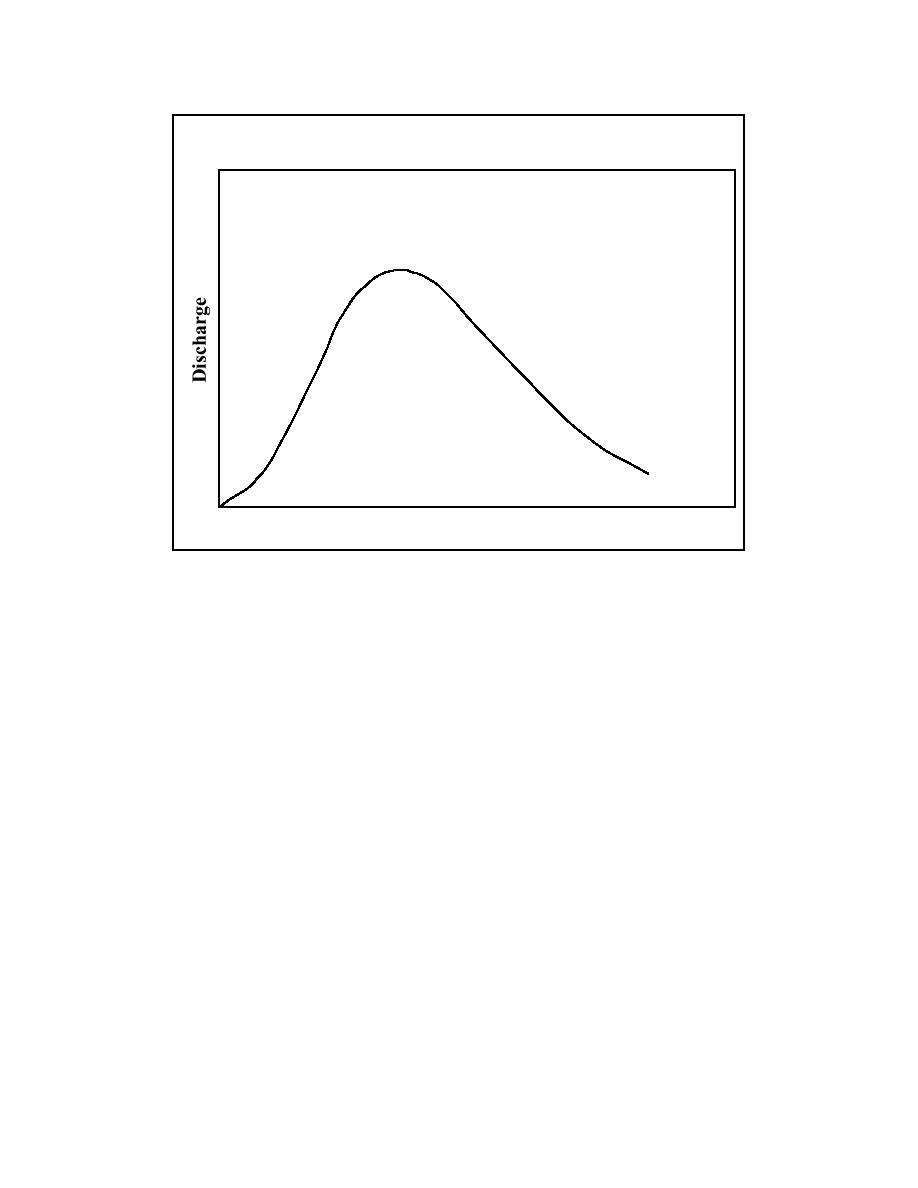
Fundamentals of Engineering Design
Hydrograph
Time
Figure 5.39 Example of Hydrograph
These equations are for sand bed rivers, based on approximately 1,000 records from 31 sets of laboratory
and field data. Brownlie's equations for predicting flow resistance are used to compute the bed roughness
in SAM. The flow resistance equations are based on four dimensionless quantities: grain Froude number
(Fg); ratio of the median grain size to the laminar sublayer (D50/ ); the bed slope (S); and the geometric bed
material gradation coefficient ( g). These quantities account for both bedform and grain roughness in a
channel cross section. However, the gradation coefficient, g, is reported by Brownlie to have a small
effect on his analysis.
Bedform roughness is the roughness that is the result of bedforms such as ripples or dunes. These
bedforms occur in the lower regime when the flow is generally subcritical (Fr < 1) (Julien, 1995). Form
roughness varies with the flow rate in the channel. Therefore, a small change in the discharge, may have
a considerable impact on the computed stable channel dimensions.
The grain roughness is the roughness associated with the size of the sediment particles on the bed.
This type of roughness typically dominates in the upper flow regime (Julien, 1995). However, upper
regime can occur at subcritical and supercritical flow as shown by Athaullah (1968), Figure 5.40.
172



 Previous Page
Previous Page
